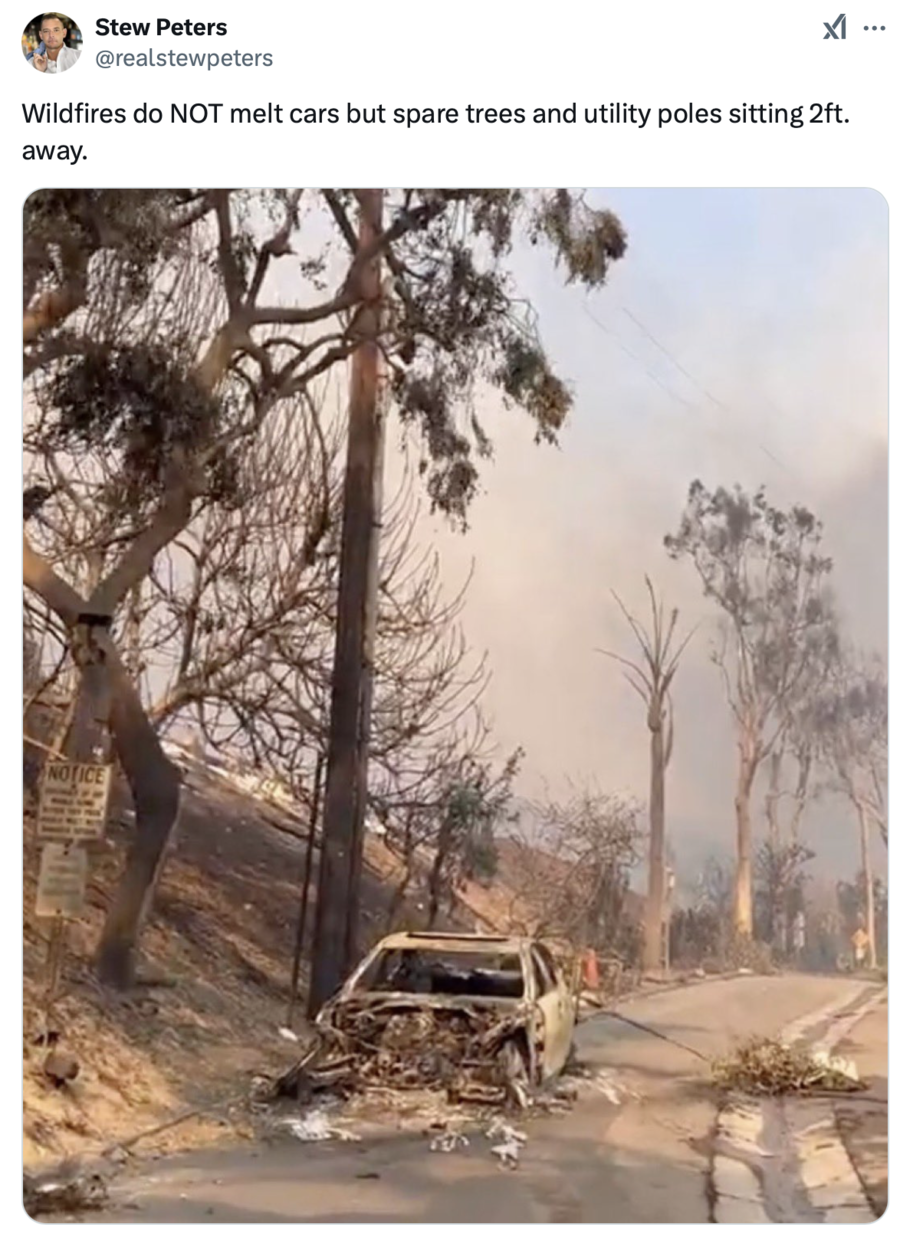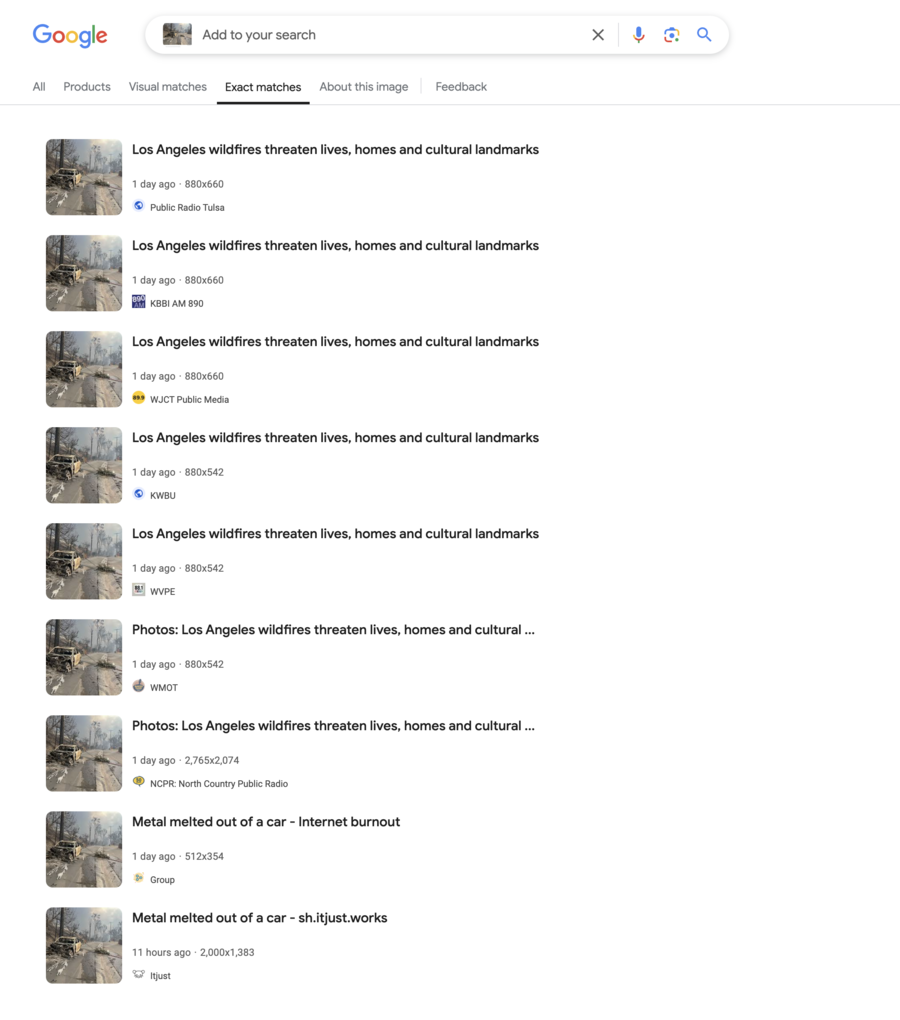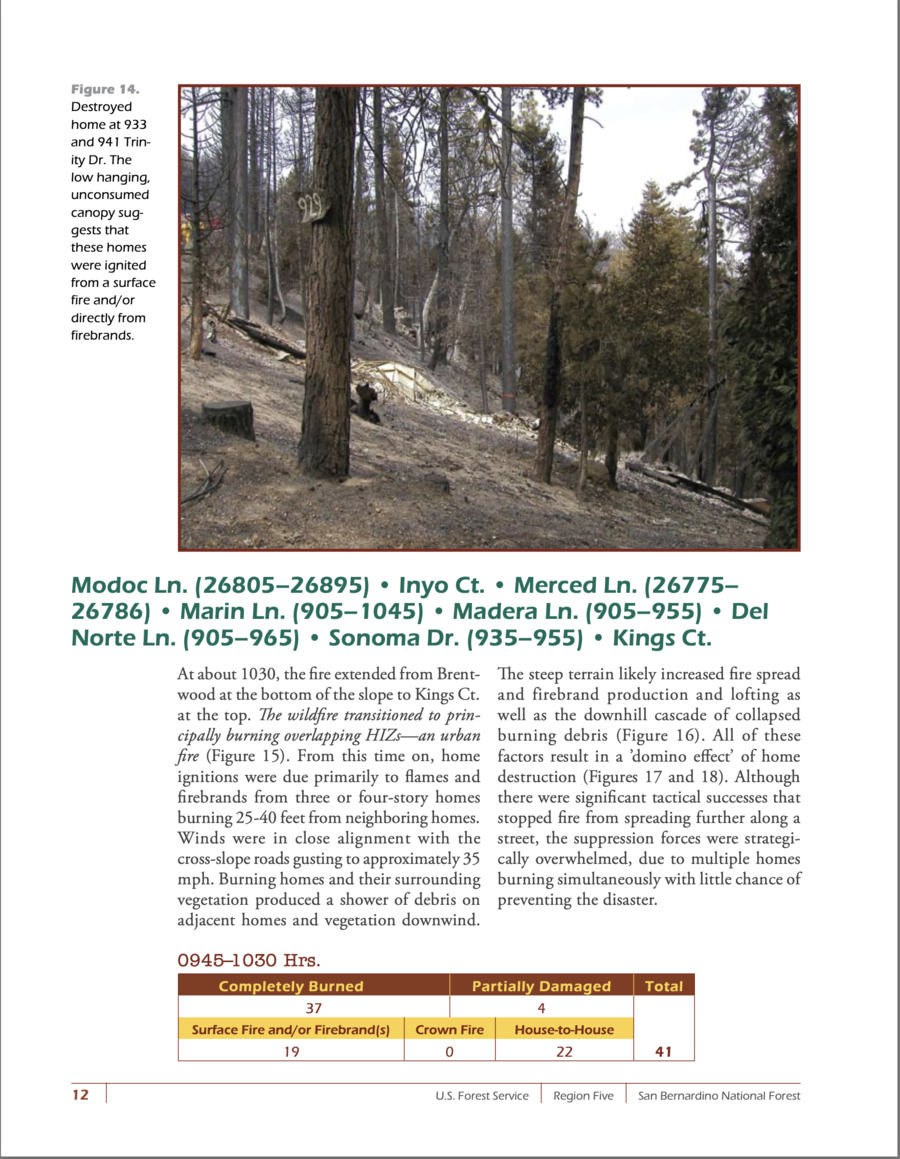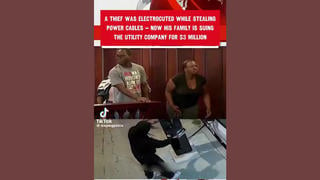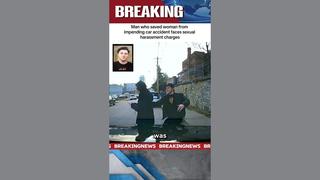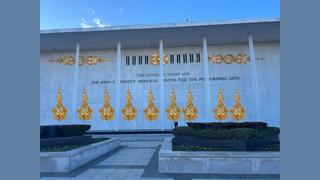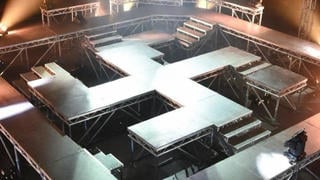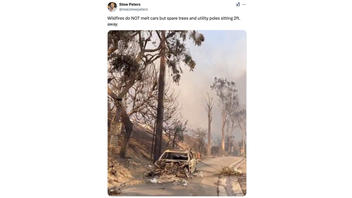
If a wildfire destroys cars, must it always destroy nearby trees as well? No, that's not true: Lead Stories found other examples of wildfires sparing trees while nearby cars and houses were incinerated. Experts explain that trees generally have a higher moisture content and take longer to heat up than closed structures like a car or home, making trees less likely to catch fire or be damaged.
The claim appeared in a post on X (archived here) on January 9, 2025. It said:
Wildfires do NOT melt cars but spare trees and utility poles sitting 2ft. away.
This is what the post looked like at the time of writing:
(Source: X screenshot taken on Fri Jan 10 14:51:13 2025 UTC)
The photo depicts a burned-out car parked on the side of a paved road. Next to it are several trees and a utility pole that appear to be singed by fire but still standing.
Lead Stories used Google reverse image search tool to determine the source of the photo:
(Source: Google reverse image search screenshot taken on Fri Jan 10 19:52:34 2025 UTC)
National Public Radio published the photo on January 9, 2025, in a story (archived here) about the Pacific Palisades fire in Los Angeles.
Los Angeles Magazine posted a video of the same scene on its X account on January 8, 2025 (archived here).
Why are some trees and a utility pole still standing when the car was destroyed? The post making the claim implies that something other than a wildfire is the cause of the car's destruction. But Lead Stories discovered trees and other objects also survived earlier wildfires when houses and vehicles did not.
A 2008 federal report (archived here) into the Lake Arrowhead, California, fire showed how a series of homes went up in flames because fiery debris jumped from house to house. Photos from the scene (pages 11-13) show many trees still standing:
(Source: USDA report screenshot taken on Fri Jan 10 19:33:55 2025 UTC)
Lead Stories did a similar fact check about trees in the Maui, Hawaii, wildfires on August 14, 2023.
Daniel Johnson, associate professor of tree physiology and forest ecology at the University of Georgia (archived here), told Lead Stories in a January 10, 2025, email that trees and houses do not burn at the same rate:
I think a lot of folks think of a wildfire like a nuclear bomb where everything gets leveled but wildfire is not like that. Trees do contain a lot of water but as dry as it has been in CA I am guessing that it was not water storage but just random chance or fuels distribution that resulted in some of the trees not being consumed.
Professor Niamh Nic Daeid of the University of Dundee (archived here), an international fire scene expert, explained to Lead Stories in an email received on January 10, 2025, that cars are easier to burn than trees because they are closed structures. That allows hot gases to build up inside. Here is her full quote:
For objects like trees or cars or houses to burn, they must be exposed to a sufficient temperature for a sufficient duration so that the materials chemically break down in a process known as thermal decomposition. When this occurs, the materials release gases which, when mixed with air, can ignite. Whether this happens depends on a variety of factors, including moisture content, how exposed materials are to the fire and for how long. Trees tend to have high moisture content and so may not be as impacted by fire burning in the open air, where hot gases rise and dissipate easier. Closed structures like a building or a car will cause a build up of hot gases and heat making the fire more intense and resulting in greater damage.
Read more
For more Lead Stories fact checks on claims involving wildfires, click here.

